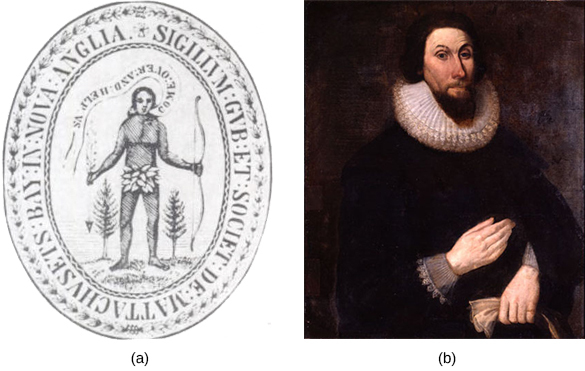| << Chapter < Page | Chapter >> Page > |
Different labor systems also distinguished early Puritan New England from the Chesapeake colonies. Puritans expected young people to work diligently at their calling, and all members of their large families, including children, did the bulk of the work necessary to run homes, farms, and businesses. Very few migrants came to New England as laborers; in fact, New England towns protected their disciplined homegrown workforce by refusing to allow outsiders in, assuring their sons and daughters of steady employment. New England’s labor system produced remarkable results, notably a powerful maritime-based economy with scores of oceangoing ships and the crews necessary to sail them. New England mariners sailing New England–made ships transported Virginian tobacco and West Indian sugar throughout the Atlantic World.
A much larger group of English Puritans left England in the 1630s, establishing the Massachusetts Bay Colony, the New Haven Colony, the Connecticut Colony, and Rhode Island. Unlike the exodus of young males to the Chesapeake colonies, these migrants were families with young children and their university-trained ministers. Their aim, according to John Winthrop ( [link] ), the first governor of Massachusetts Bay, was to create a model of reformed Protestantism—a “city upon a hill,” a new English Israel. The idea of a “city upon a hill” made clear the religious orientation of the New England settlement, and the charter of the Massachusetts Bay Colony stated as a goal that the colony’s people “may be soe religiously, peaceablie, and civilly governed, as their good Life and orderlie Conversacon, maie wynn and incite the Natives of Country, to the Knowledg and Obedience of the onlie true God and Saulor of Mankinde, and the Christian Fayth.” To illustrate this, the seal of the Massachusetts Bay Company ( [link] ) shows a half-naked Indian who entreats more of the English to “come over and help us.”

Puritan New England differed in many ways from both England and the rest of Europe. Protestants emphasized literacy so that everyone could read the Bible. This attitude was in stark contrast to that of Catholics, who refused to tolerate private ownership of Bibles in the vernacular. The Puritans, for their part, placed a special emphasis on reading scripture, and their commitment to literacy led to the establishment of the first printing press in English America in 1636. Four years later, in 1640, they published the first book in North America, the Bay Psalm Book. As Calvinists, Puritans adhered to the doctrine of predestination, whereby a few “elect” would be saved and all others damned. No one could be sure whether they were predestined for salvation, but through introspection, guided by scripture, Puritans hoped to find a glimmer of redemptive grace. Church membership was restricted to those Puritans who were willing to provide a conversion narrative telling how they came to understand their spiritual estate by hearing sermons and studying the Bible.

Notification Switch
Would you like to follow the 'U.s. history' conversation and receive update notifications?